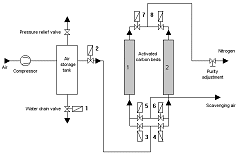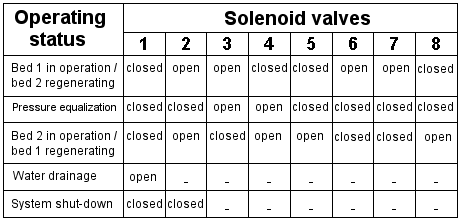Figure 55 shows the principles behind this system. The switching sequence of the solenoid valves can be seen in Table 18. Due to the need for pressure containers to hold the absorption material, these systems are relatively large and heavy. The solenoid valves also represent potential sources of faults.
But from the point of view of efficiency (yield), PSA systems are favorable compared with membrane systems, particularly when high degrees of purity are required. It is not difficult for a PSA system to produce nitrogen with purity of 99.9% cost-effectively.
 |
Click on the graphic to enlarge. Figure 55: Principle of a PSA nitrogen generation system |
 |
Table 18: Controlling a PSA system |
A total of around 550 containers had been fitted with PSA systems by 2000. Such systems are not currently available on the market, since all the providers have either ceased production of this type of CA system or no longer exist.